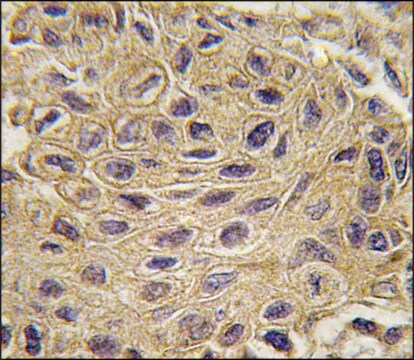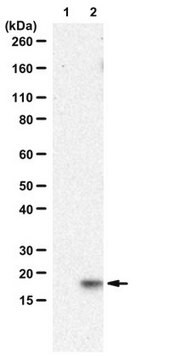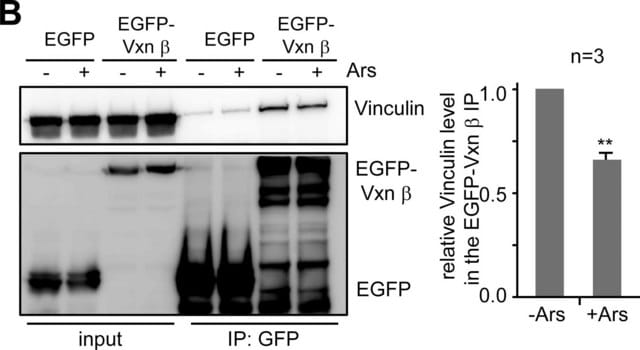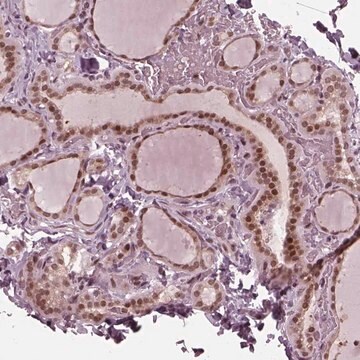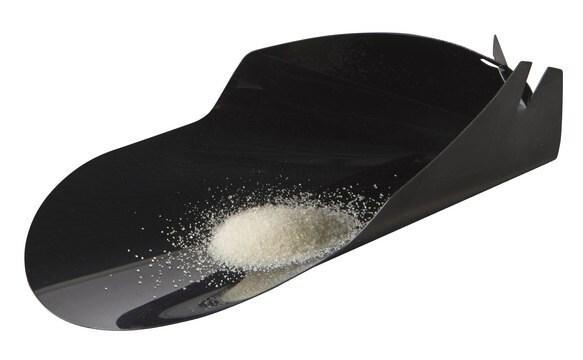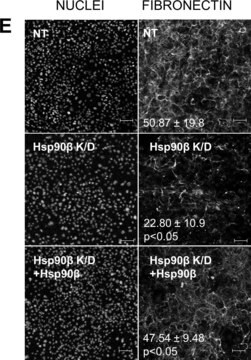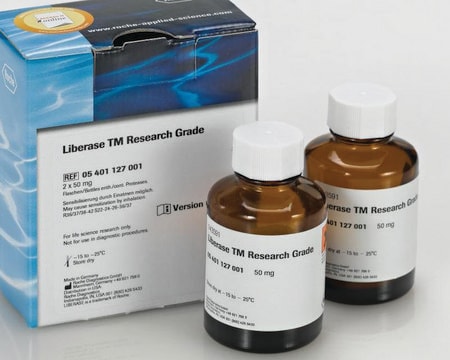ABS1627
Anti-CTGF Antibody, N-Term Antibody
from goat, purified by affinity chromatography
Sinónimos:
Connective tissue growth factor, CCN family member 2, Hypertrophic chondrocyte-specific protein 24, IBP-8, IGF-binding protein 8, IGFBP-8, Insulin-like growth factor-binding protein 8
About This Item
Productos recomendados
biological source
goat
Quality Level
antibody form
affinity isolated antibody
antibody product type
primary antibodies
clone
polyclonal
purified by
affinity chromatography
species reactivity
human
technique(s)
neutralization: suitable
western blot: suitable
NCBI accession no.
UniProt accession no.
shipped in
dry ice
target post-translational modification
unmodified
Gene Information
human ... CTGF(1490)
General description
Specificity
Immunogen
Application
Signaling
Growth Factors & Receptors
Neutralizing Analysis: A representative lot inhibited CTGF-stimulated collagen synthesis, but not CTGF-stimulated DNA synthesis, in rat kidney (NRK) fibroblasts (Grotendorst, G.R., and Duncan, M.R. (2005). FASEB J. 19(7):729-738).
Note: It is recommended that gel electrophoresis be performed under non-reducing condition to effectively separate CTGF N- and C-terminal fragments, as well as differentially glycosylated N-terminal fragments.
Quality
Western Blotting Analysis: 2.0 µg/mL of this antibody detected 1 ng of the N-terminal (1-180), but not C-terminal (181-349), fragment derived from baculovirus expressed human CTGF by chymotrypsin cleavage.
Target description
Physical form
Storage and Stability
Handling Recommendations: Upon receipt and prior to removing the cap, centrifuge the vial and gently mix the solution. Aliquot into microcentrifuge tubes and store at -20°C. Avoid repeated freeze/thaw cycles, which may damage IgG and affect product performance.
Other Notes
Disclaimer
Not finding the right product?
Try our Herramienta de selección de productos.
Optional
Storage Class
12 - Non Combustible Liquids
wgk_germany
WGK 1
Certificados de análisis (COA)
Busque Certificados de análisis (COA) introduciendo el número de lote del producto. Los números de lote se encuentran en la etiqueta del producto después de las palabras «Lot» o «Batch»
¿Ya tiene este producto?
Encuentre la documentación para los productos que ha comprado recientemente en la Biblioteca de documentos.
Nuestro equipo de científicos tiene experiencia en todas las áreas de investigación: Ciencias de la vida, Ciencia de los materiales, Síntesis química, Cromatografía, Analítica y muchas otras.
Póngase en contacto con el Servicio técnico